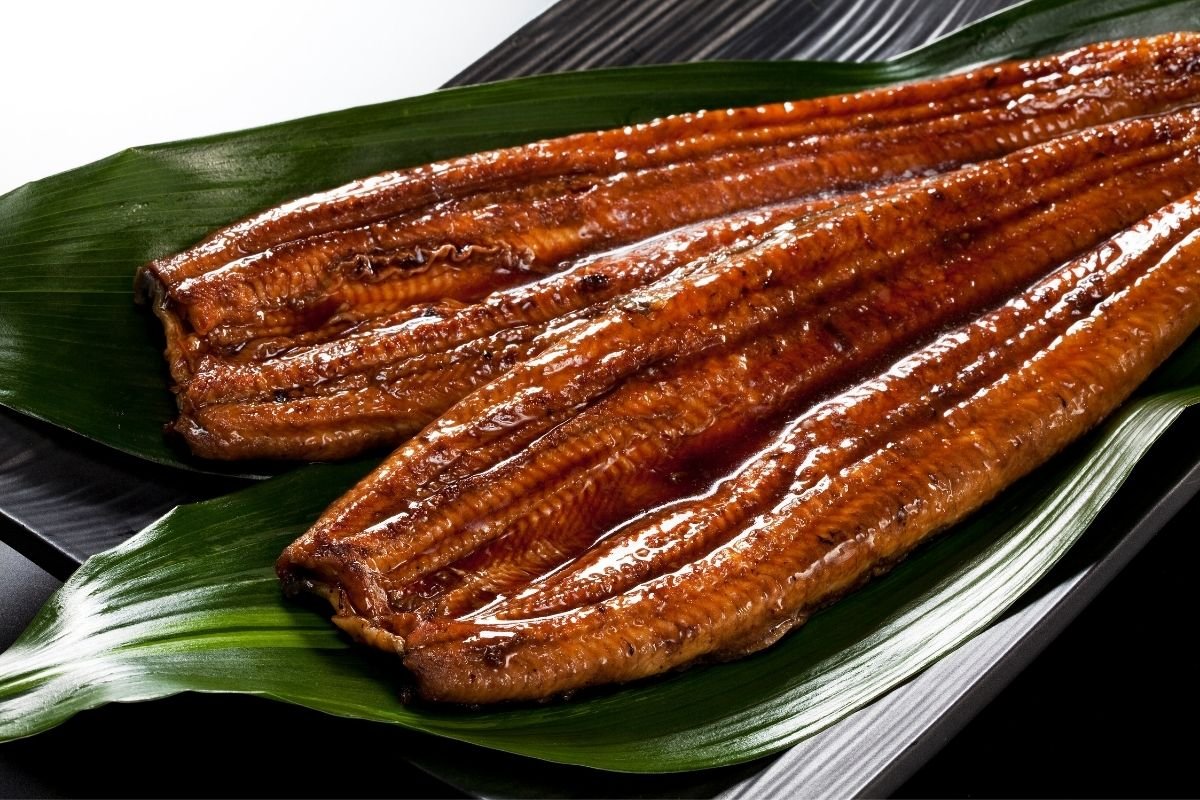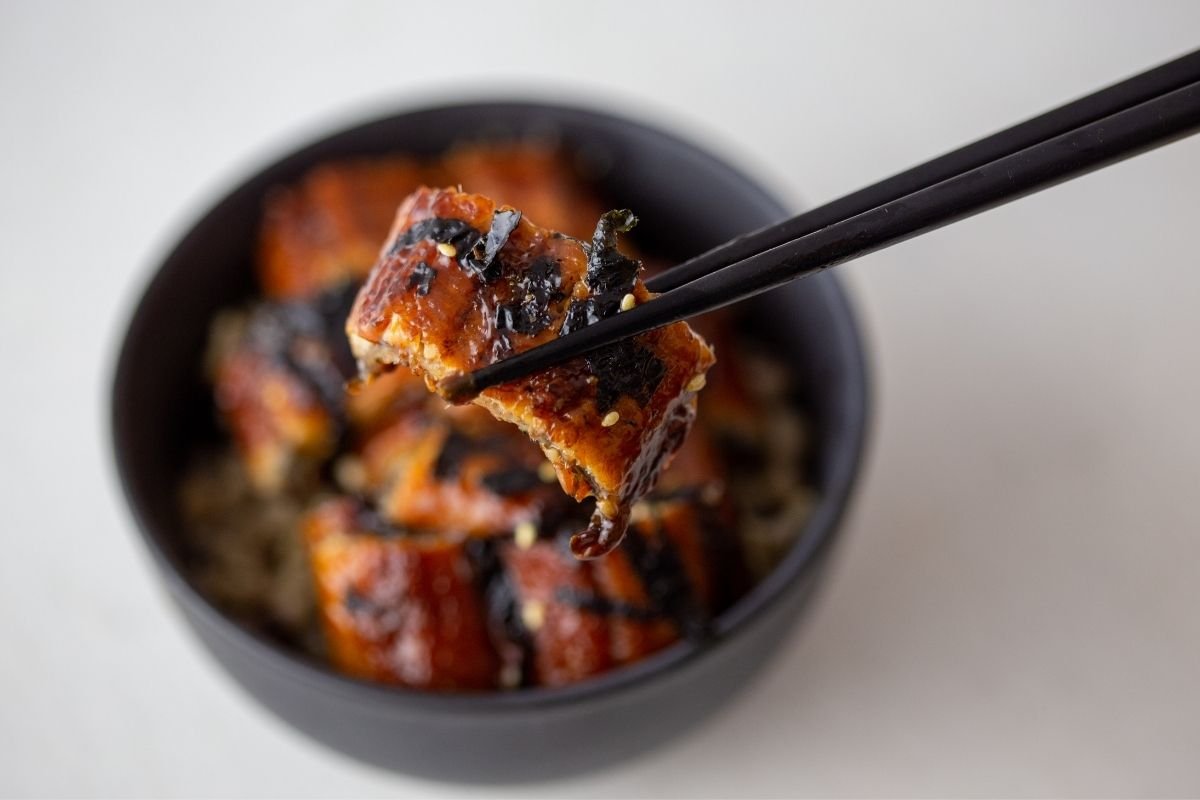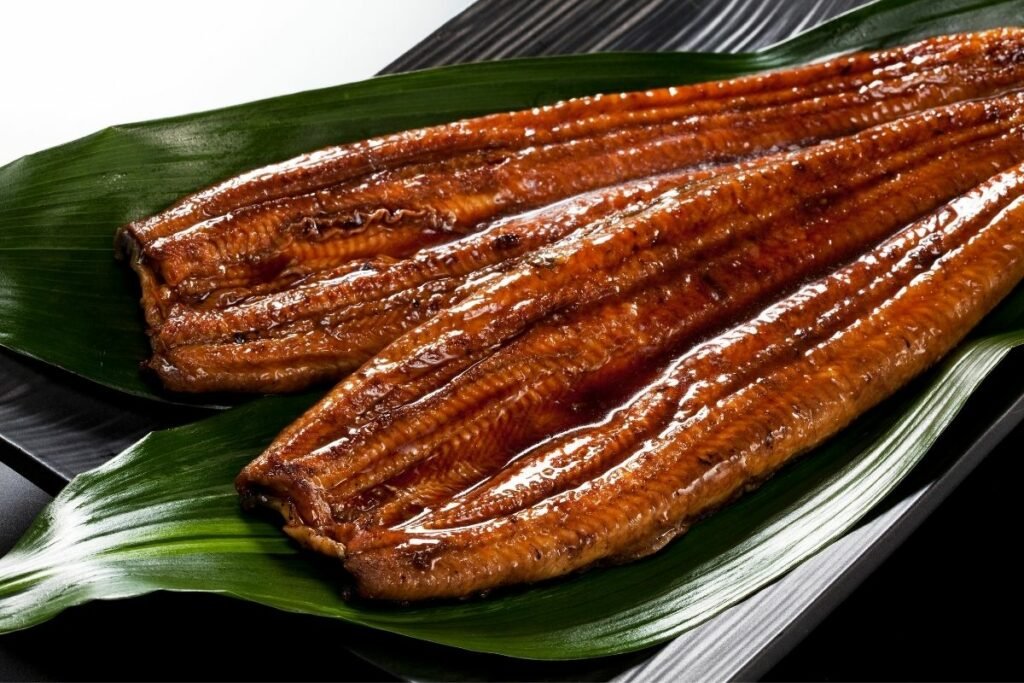Unagi has been treasured as a nutritious and sumptuous cuisine in Japan for hundreds of years, which may surprise you.
This article will go into the culture of unagi, as well as expose you to several delectable methods to cook it.
What Is Unagi?

Freshwater eels native to Japan, sections of China, and Korea are known as unagi. Unagi is a general term for freshwater eel of any provenance in Japanese, but it has come to signify a specific type of eel in the worldwide culinary language.
As a unique Japanese eel preparation, the name is well recognized throughout the worldwide cooking community. It is commonly used in sushi, soups, or grilled and eaten over rice.
There are two kinds of eels: freshwater eels and saltwater eels. Anguilla japonica is the scientific name for freshwater eels native to Japan.
This eel may be found in shallow estuaries off the shores of Japan, Eastern China, and the Korean peninsula.
Eels move to saltwater in order to reproduce before returning to rivers and streams to live out their lives. These are among the tiniest eels in the globe when compared to eels from other regions of the world.
Because freshwater eels are so costly, they are considered a delicacy in Japanese cuisine. There are eel farms in various places of Japan, but they are expensive to run.
Eels, as carnivores, require a significant quantity of protein each day to live. The need typically necessitates regular harvesting of wild fish from eels’ native habitats.
Unagi Sauce
Unagi no Tare, or eel sauce, is a thick and sweetened soy sauce.
It’s a basic sauce prepared of soy sauce, mirin, sugar, and sake (no eel is used in the sauce except for the more traditional nitsume sauce, which incorporates eel broth), thick enough to serve as a glaze.
Traditionally, it is served with grilled eel or other meals that include grilled eel, such as unagi sushi or unagi don.
Despite the fact that there are numerous commercial brands of unagi sauce on the market, the greatest unagi sauce is the one you create for yourself.
While this sauce is ideal for unagi sushi, it does not taste fishy. This sauce is commonly misunderstood to be composed with unagi. It is not the case.
It got its name from the fact that this sauce is usually used in the cooking of unagi, which is the Japanese term for freshwater eel.
This sauce, on the other hand, is incredibly flexible and great on a variety of other foods.
Instead of soy sauce, use tamari sauce or liquid amino to produce gluten-free unagi sauce. If you choose, you can even make it vegan.
Homemade unagi sauce can keep in the fridge for approximately two weeks. Because it includes preservatives, store-bought unagi sauce may be stored for several months.
If you don’t use unagi sauce very often, you may freeze it. To defrost, place the frozen sauce in a small saucepan and reheat on low heat until the sauce is hot.
What Does Unagi Taste Like?

Unagi has a mild, sweet flavor that is not overbearing and is quite tasty. The flesh is soft and chewy, with a porous structure that makes it excellent for sauce recipes, as the meat absorbs all the liquids, keeping the meal wet and tasty.
Unagi does not have a fishy aftertaste like a saltwater eel, but its final flavor is heavily influenced by the sauce used to glaze it or other more potent components in the dish.
How Is Unagi Served And Eaten?
Unagi is cooked in a variety of ways, each with its own distinct flavor. It is typically cooked over charcoal, but you may use a flat grill top or an oil-coated nonstick pan instead.
Baked unagi is another tasty and simple recipe. The best way to achieve success is by seasoning the fish with sake and salt, skin side down, bake for eight minutes, then coat with a sweet basting sauce consisting of soy, sugar, mirin, and sake.
Coat the fish fillets in flour that has been well-seasoned and cook for eight to 10 minutes for deep-fried eel.
The components found in the basting sauce are usually sweet and are used for upgrading the eels’ flavor are critical to the resulting taste of the unagi, and each restaurant has its own secret recipe.
Is Unagi Healthy?
The health advantages of the Japanese eel are substantial, and the fish is especially high in nutrients.
The fact that Japanese people eat eel is likely another reason why the country is one of the healthiest in the world.
To begin with, eel includes a wide range of vitamins and minerals, such as vitamins A, E, D, B1, B2, B12, and phosphorous.
This mineral is very beneficial to health since it helps to regulate your body’s PH levels, enhances digestion and metabolism, and allows the body to absorb nutrients more effectively.
Unagi is also rich in omega-3 fatty acids. It helps to decrease cholesterol, lower blood pressure, and lessen the risk of diabetes and arthritis.
As if that weren’t enough, there are other health advantages that are unique to women.
In a Japanese restaurant, unagi is slightly more costly than other species of fish. So, if the cost of an unagi meal is prohibitively expensive, try it in a maki roll instead.
When paired with other fish or sushi toppings, it may be an excellent introduction to the flavor of unagi.
Summary
Unagi is a popular dish in Japan, with specific restaurants devoted to the eel. According to a 2013 article, the species is on the country’s red list of endangered animals due to a 70 percent rate decrease over the previous three generations.
Because of this, as well as difficulties with farm rearing, Seafood Watch, a sustainable seafood database, has advised customers to avoid the product entirely.
If you must eat eel on your next vacation to Japan, there is another alternative which is the unagi’s saltwater equivalent, anago, might be a more sustainable option.
Simply described, unagi is the eel whose offspring are born in the sea and migrate to freshwater in order to live before returning to mate many years later, whereas anago is the eel whose whole lifetime occurs in saltwater.
Unagi is fattier and richer than anago, which has a fluffier texture and less taste.
- What Is a Maiko? - July 13, 2025
- What Does Domo Arigato Mean? - July 12, 2025
- What Does Naruto Mean? - July 12, 2025









